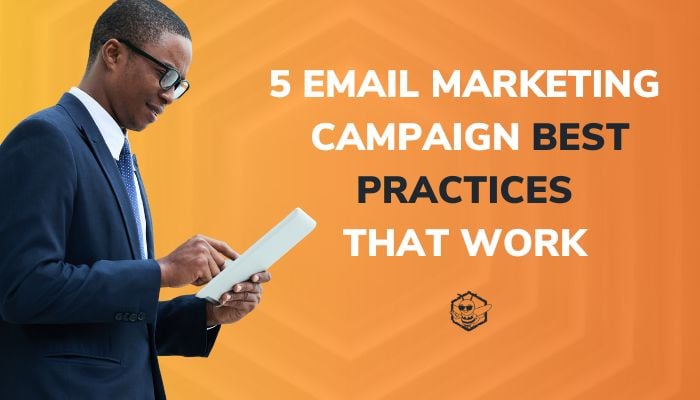Whether you're new to email marketing or just looking for the latest tips on best practices, you've come to the right place! While other channels such as social media and text message marketing have entered the market as new and exciting ways to reach your target buyer, email marketing is still one of the most, if not the most, effective ways to communicate your message and turn qualified leads into buyers. After creating several thousand email campaigns in hundreds of different situations, here are the best tips I can offer to help your email campaign be successful.
Quick Links
1. Communicate like a real human
I'll often catch myself writing emails for a lead nurturing campaign and realize I'm not writing them as if I'm speaking to a person face-to-face. I sound robotic, and there's no "flavor" or personality behind my words on the page.
I've learned it's so important to speak in emails as if you were actually speaking with someone in a conference room, and remember that there is a real live person on the other end reading your email. It's important to make sure you keep your brand voice in mind while still understanding YOU are a real human, and so is the person receiving the email, so don't be afraid to add some personality to your writing.
2. Add personalization when possible
Utilize the magic of your content management system (CRM) and always include as much personalization as possible. Using their first name is a gimme, but it's time to think outside the box here and include things you've already talked with them about that are customized to your own business.
For example, a client has a form that includes a custom property that asks users to fill in their biggest challenge with their current website builder. This is great information to then use in your nurture campaigns, and it will let the person know you really care about their situation and are looking to help them solve their problem.
3. Target smaller segments based on set criteria
I am not a fan of email blasting your entire database. Ever.
Not a huge fan of newsletters either unless the person has specifically opted in to receive them. Before you write an email, you must strategically consider who it's intended for. You probably have multiple buyer personas at varying lifecycle stages, different product interests, etc. Your entire database isn't just one giant person, so be sure to create custom lists that target a specific audience, and THEN you can start drafting up the copy.
4. Adjust the frequency of emails for unengaged contacts
It's incredibly important not to abuse your list. Every business and industry is different regarding best practices for how often you should email your list.
According to Databox, 33.3% of professionals send email campaigns on a weekly basis, 26.67% – multiple times per month, and 13.33% each – multiple times per week, daily, and monthly. At the same time, two-thirds of specialists said they reduce email frequency if the recipients do not engage. Be sure to continuously monitor your open rates, click through rates, and unsubscribe rates. That will give you a good pulse on whether or not your email frequency needs to be changed.
5. Monitor Analytics to determine the success or failure of your email efforts
Most email marketing platforms, such as HubSpot, include powerful tools to analyze your email performance. You should use them every time you send an email. They are a gold mine of data on how your emails are performing and what needs to be improved. Pay attention to every metric that is available to you. Open rates can vary greatly depending on the time and day you send the email and how well crafted your subject line is. Click-through rates are a great indicator of whether or not you are sending your emails to the right people. If you have low click-through rates, you are either off-target with your email list or didn't include a specific enough call to action, so users were confused about what to click on and what to do next.
Email marketing is definitely a skill that is perfected over time, but these tips will help you get started and get you on the right track. Emailing is as much a skill as it is an art. There are plenty of right and wrong ways to do email. The key is to follow these tips above and always be working to continuously improve your strategy.




.png?width=100&height=100&name=Why%20Were%20Not%20a%20Marketing%20Agency%20(And%20What%20That%20Means%20for%20Your%20Growth).png)
